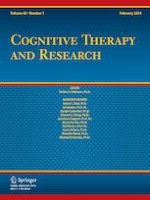07-10-2023 | Original Article
Defining Compulsive Skin Picking Subgroups Based on Emotional Response Patterns and Data-Driven Methodology
Gepubliceerd in: Cognitive Therapy and Research | Uitgave 1/2024
Log in om toegang te krijgenAbstract
Background
While behavioral treatment for compulsive skin picking (CSP) is frequently effective, treatment response is often incomplete. This may be due in part to heterogeneity in symptom presentations, where certain patient subgroups may not have symptoms that conform to models of CSP that are used to design interventions. To investigate the problem, we used data-driven approaches to parse apart heterogeneity and identify specific subgroups of individuals who experience CSP. These subgroups were defined based on emotions experienced before and after picking episodes.
Methods
We applied latent class analysis to a large sample of participants who enrolled in an online treatment program for CSP (N = 1,636). During treatment, participants recorded their emotions before and after picking episodes, as well as a number of cognitive, behavioral, clinical, and situational variables associated with picking episodes.
Results
We identified five subgroups of individuals based on their emotional response patterns. Several subgroups followed traditional conceptualizations of CSP, including patterns that were consistent with CSP as a reinforcing emotion regulation strategy. An additional unexpected subgroup showed very strong emotional activation before and after picking episodes, where individuals may have experienced strong emotions before picking episodes that were not modified by picking behavior.
Conclusions
Using advanced data collection and analytic procedures, we identified emotional response patterns associated with specific subgroups of individuals who experience CSP. This information can be used to improve future intervention design and personalize treatment to specific presentations of CSP.
